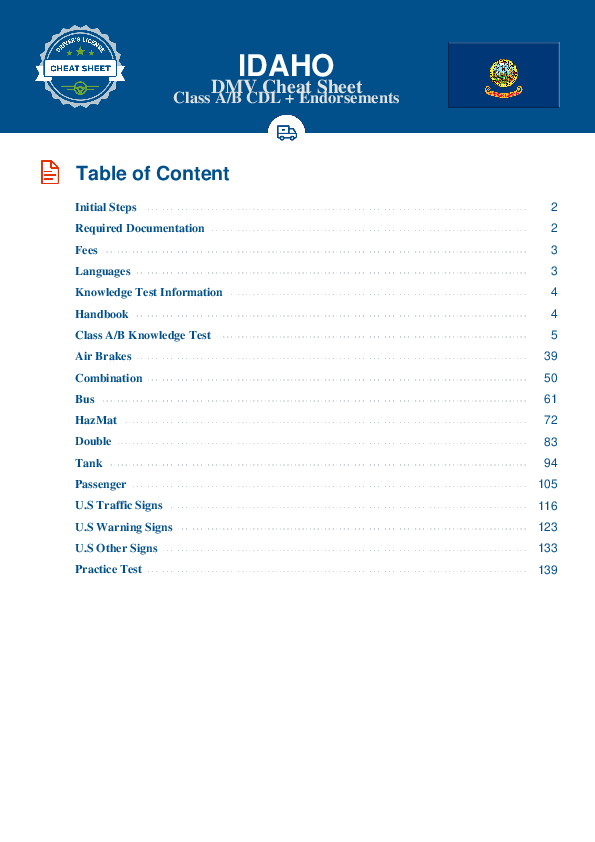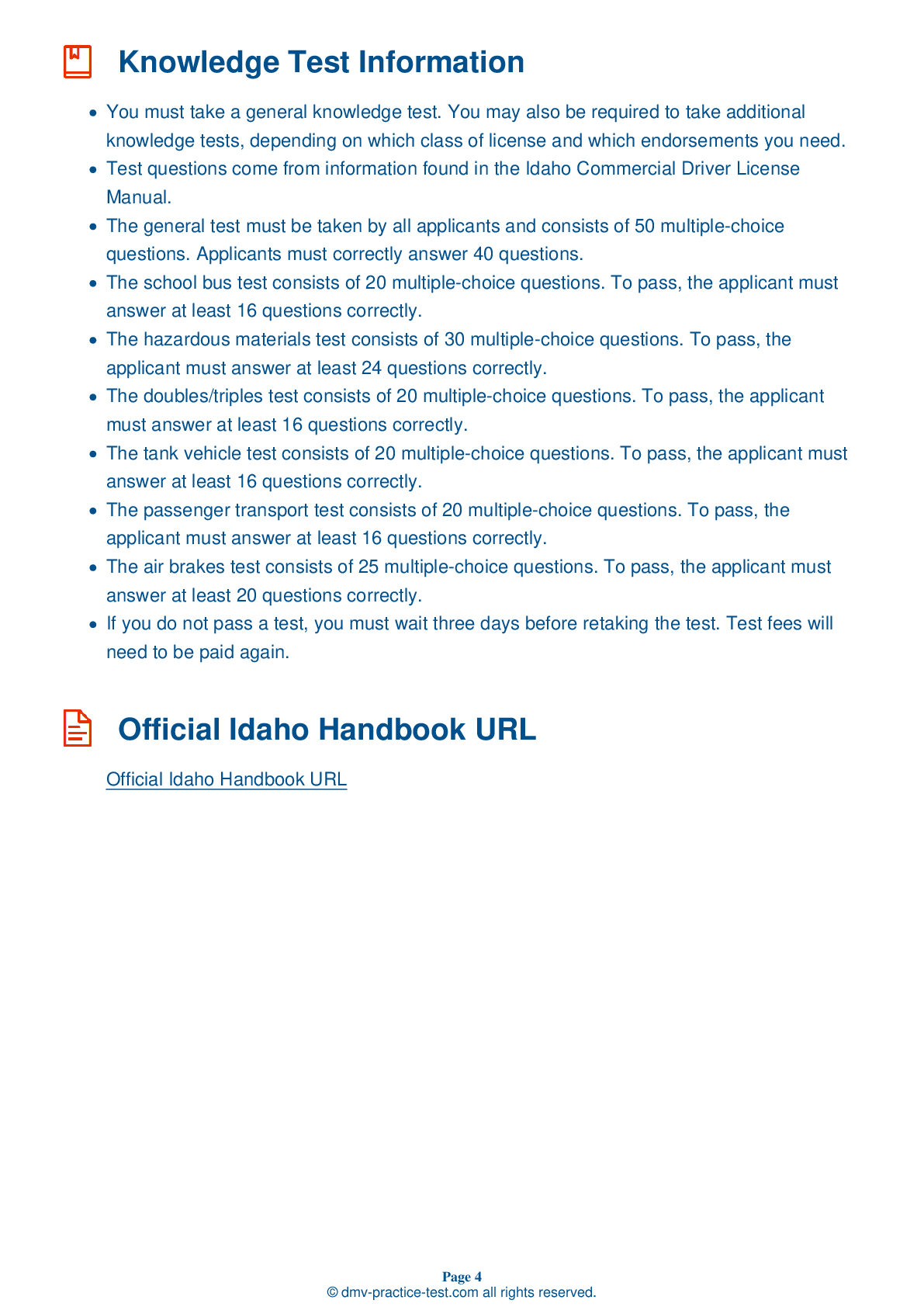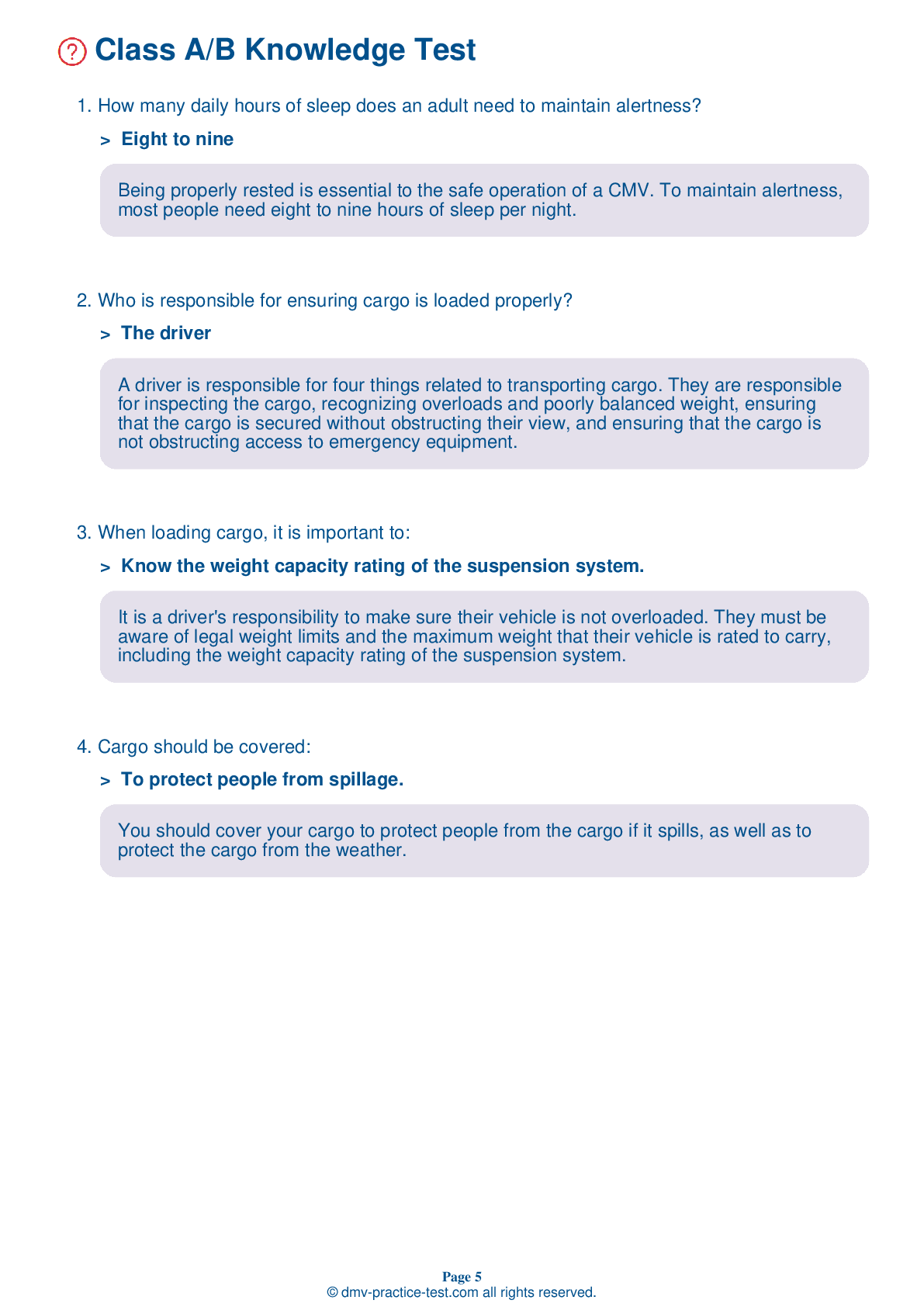Air Brakes Endorsement Test | Idaho 2025 #1 Page 4 of 4
Train for FREE online with our Idaho CDL air brake test. The official exam test consists of several obligatory parts, with all of them checking your knowledge of different blocks of road rules. If you need to obtain a ID Class A/Class B driver license in 2025, practice as much as possible. Free sample tests published on our website will help you check and improve your knowledge and boost your grades. Please bear in mind that the requirements for CDL may vary from state to state.
19 . What is removed when an air tank is drained?
In an air brake system, air tanks have drains to remove accumulations of water and compressor oil. Allowing water and oil to accumulate in the system could cause damage to the brakes.
20 . Brakes out of adjustment will:
Brakes out of adjustment will fade before those that are properly adjusted. Brake adjustment must be checked frequently to help prevent brake issues.
21 . Lights that indicate that anti-lock brakes are not working are:
Vehicles equipped with Anti-Lock Braking Systems (ABS) have yellow malfunction lights to indicate issues in the braking system.
22 . If the spring brakes are on, you should:
Do not use the brake pedal when the spring brakes are on. This could damage the brakes by subjecting them to the combined forces of springs and air pressure.
23 . A low air pressure warning signal should activate:
In an air brake system, a low air pressure warning signal must come on if air pressure in the tanks falls below 60 psi. This warning signal may come in the form of a light, a buzzer, or a wig wag.
24 . When parked on a flat surface, you should:
When parking on a level surface, you should use wheel chocks. If the vehicle is not equipped with spring brakes, this is essential to prevent the trailer from moving.
25 . If the safety relief valve in an air brake system is releasing air:
The safety relief valve in an air brake system releases air if necessary to prevent pressure in the system from becoming too high. If the valve starts releasing air, there is something wrong. Have a mechanic fix the problem.
See the exact questions that will be on the 2025 Idaho DMV exam.
99.2% of people who use the cheat sheet pass the FIRST TIME
Lillian MCcranie explains how our CDL study guide was helpful in passing the exam and recommends it to everyone.
Cameron tells us how he purchased the CDL exam, and found it to be a useful tool which helped him pass the exam and find a job.



